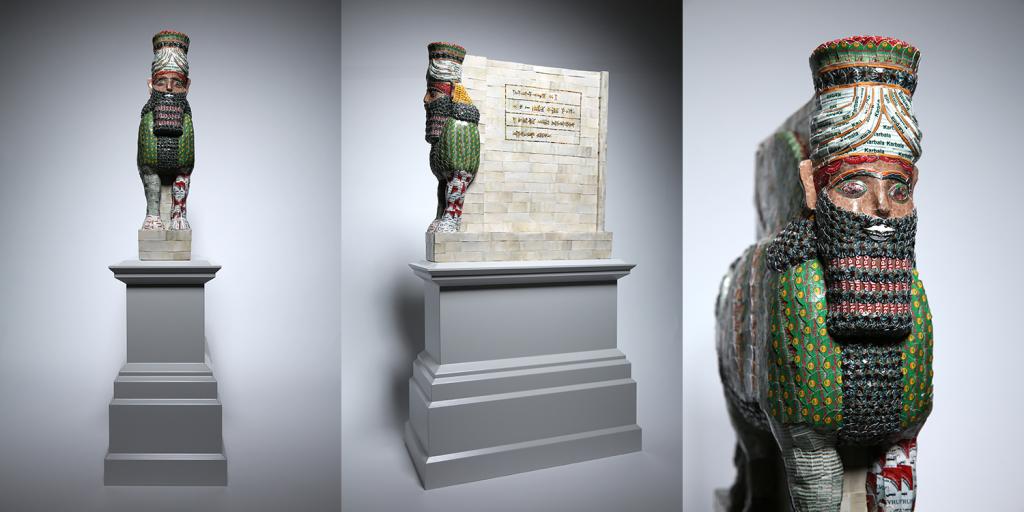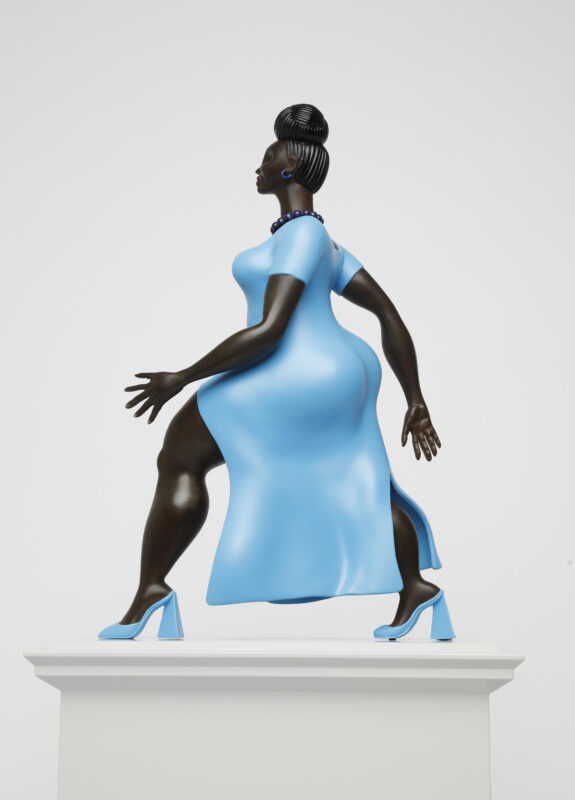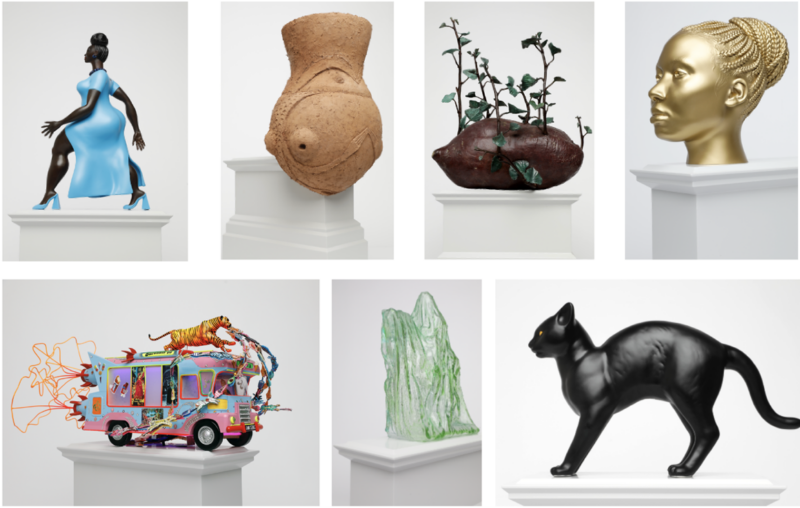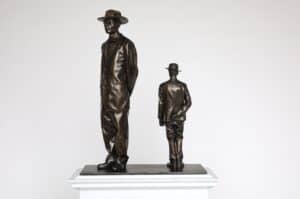Michael Rakowitz’s new commission The Invisible Enemy Should Not Exist will be unveiled on the Fourth Plinth in London’s Trafalgar Square on Wednesday 28 March 2018.

The Invisible Enemy Should Not Exist is a project that Rakowitz started in 2006 that attempts to recreate over 7,000 archeological artefacts looted from the Iraq Museum during the war or destroyed in its aftermath. For the Fourth Plinth Rakowitz will recreate the Lamassu, a winged bull and protective deity that stood at the entrance to Nergal Gate of Nineveh from c 700 B.C, until it was destroyed by ISIS in 2015. The Lamassu will be made of empty Iraqi date syrup cans, representative of a once-renowned industry decimated by the Iraq Wars. It will occupy the plinth for two years, until March 2020.
Michael Rakowitz was born in New York in 1973. He lives and works in Chicago, and his first museum survey Backstroke of the West is at the Museum of Contemporary Art in Chicago until 4 March 2018. Rakowitz’s work explores global issues and invites others into the conversations fostered by his public projects, installations and events.
Justine Simons OBE, Deputy Mayor for Culture and Creative Industries, said:
“The Fourth Plinth displays the world’s most loved and talked-about public art – in the heart of London. I can’t wait to see Michael Rakowitz’s beautiful work on the plinth. I know it will generate debate and become a landmark in its own right. Michael’s work was selected from the most international shortlist to date and shows that London is open to creative talent from around the world.”
Rakowitz’s work will follow on from the current sculpture Really Good by David Shrigley, a 7m high thumbs up. It will be the 12th work to appear on the Fourth Plinth since the commissioning programme began in 1998. The Fourth Plinth is the smallest but most prominent sculpture park in the world. Funded by the Mayor of London with support from Arts Council England, the programme invites world-class artists to make astonishing new works for Trafalgar Square. An established icon for London, it brings out the art critic in everyone.
About
The Fourth Plinth Programme is the most popular public art project in the UK. Funded by the Mayor of London with support from Arts Council England, the programme invites world-class artists to make astonishing new works for the centre of the capital city. An established icon for London, it brings out the art critic in everyone.
The programme was initiated in 1998 by the RSA with the support of the Cass Sculpture Foundation for the following commissions: Ecce Homo by Mark Wallinger (1999), Regardless of History by Bill Woodrow (2000) and Monument by Rachel Whiteread (2001).
?In 1999 responsibility for Trafalgar Square was transferred to the Mayor of London and the Fourth Plinth Programme is now led by the Mayor’s Culture Team, under the guidance of the Fourth Plinth Commissioning Group (FPCG). Its first commission was Marc Quinn’s sculpture Alison Lapper Pregnant, unveiled in September 2005. It was followed by Thomas Schütte’s Model for a Hotel in 2007 and by Antony Gormley’s One & Other in 2009. Yinka Shonibare MBE’s sculpture Nelson’s Ship in a Bottle was unveiled in 2010. Powerless Structures, Fig 101 by Elmgreen & Dragset followed for 2012. Katharina Fritsch’s Hahn / Cock, was launched in July 2013 and Hans Haacke’s Gift Horse was the tenth commission in 2015. Really Good by David Shrigley is currently in situ.
For the full story: How London Created the Smallest Sculpture Park in the World, with a foreword by Grayson Perry. Published by Art/Books to coincide with the exhibition of the latest shortlisted commissions, this book tells the story of every work that has stood upon the plinth, including the very latest, David Shrigley’s Really Good, unveiled in September 2016. Individual chapters present the background and genesis of each piece, with behind-the-scenes views of the fabrications, contributions from those involved, and in situ shots of all the installed artworks.









